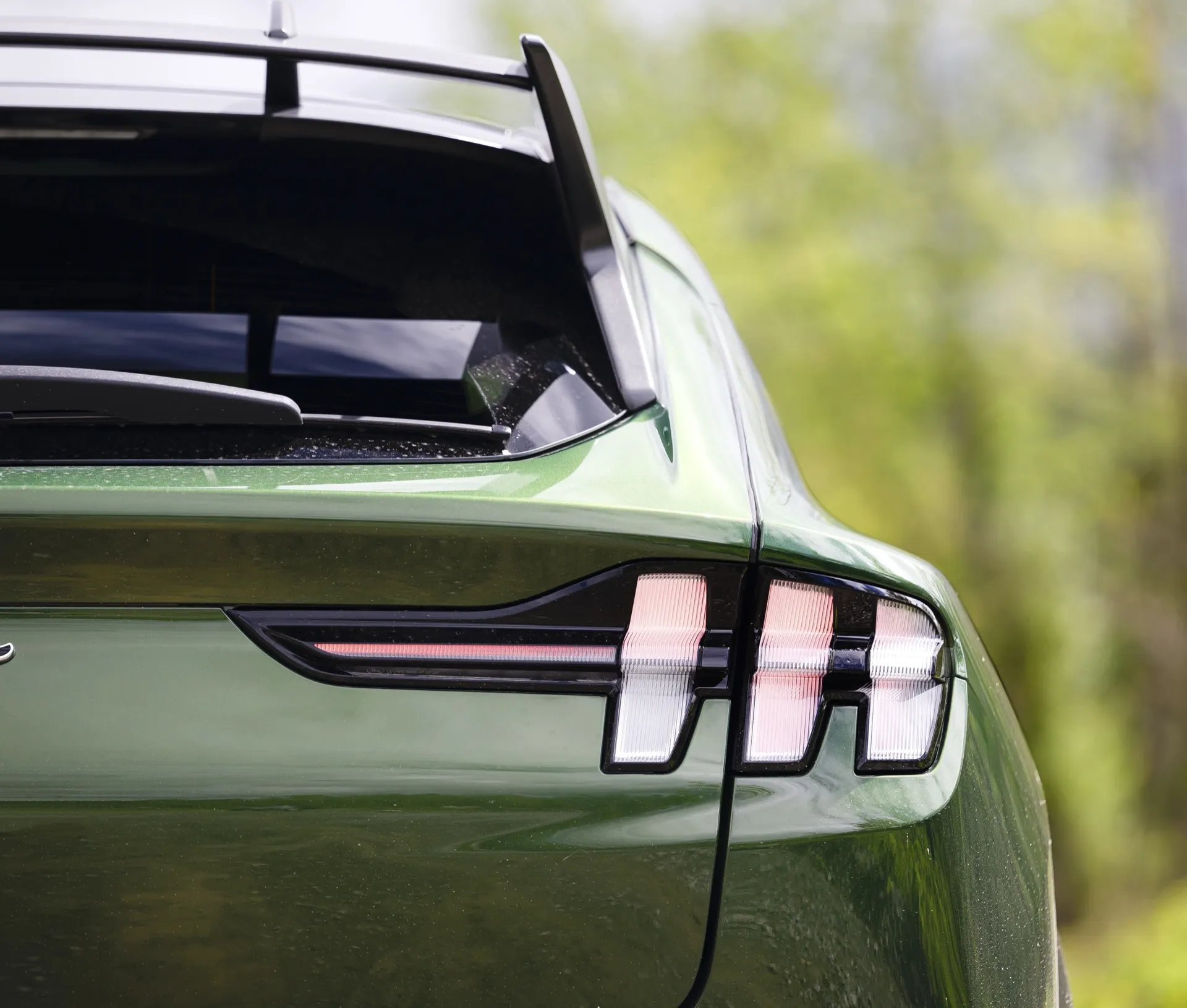It’s a case of legacy versus upstart—but in the competition between the Ford Mustang Mach-E and Tesla Model 3, 20-year old Tesla is the legacy electric vehicle maker, and 120-year old Ford is the upstart.
While both of these choices are compelling, relatively affordable electric vehicles, one of them is a crossover SUV and the other is a sedan. Yes, the Tesla Model Y is a more direct match against the Mustang Mach-E—and for that matter a stronger seller. But the Model 3 and Mach-E have more in common with the Mach-E than you might think.
Both models are among the best-rated EVs here and among our companion sites. The Mach-E was the winner of our Best Car To Buy 2021, and the 2025 version carries along in mostly the same form. The Tesla Model 3 won the same award a couple years earlier from our sister site Green Car Reports, although it’s evolved quite a lot since then.
Here’s how they fare today, head-to-head.
2024 Tesla Model 3
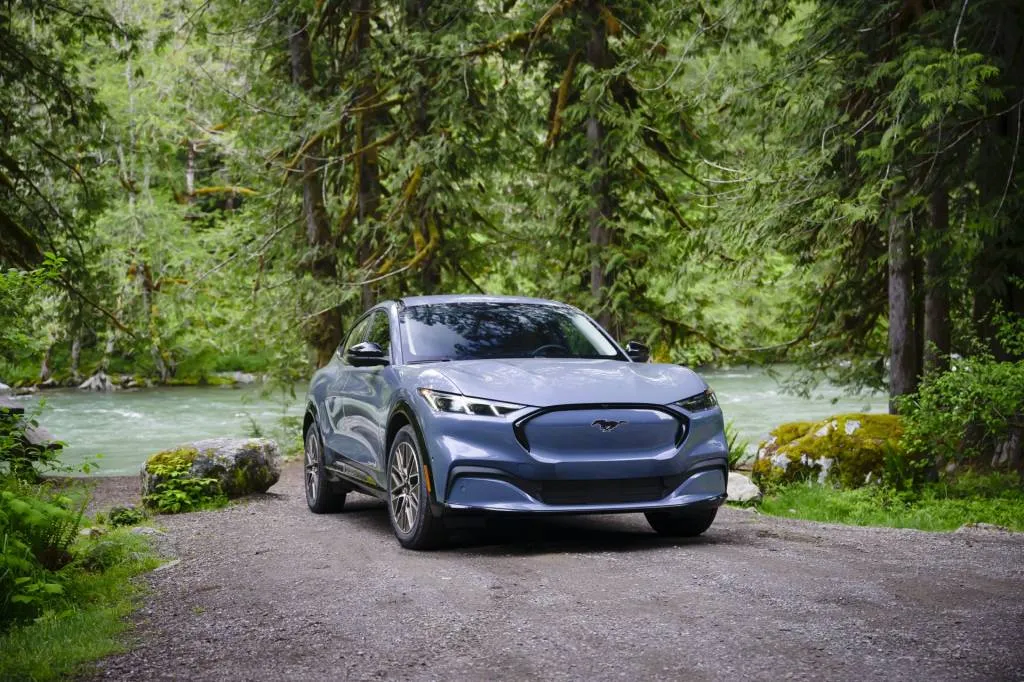
2024 Ford Mustang Mach-E Premium
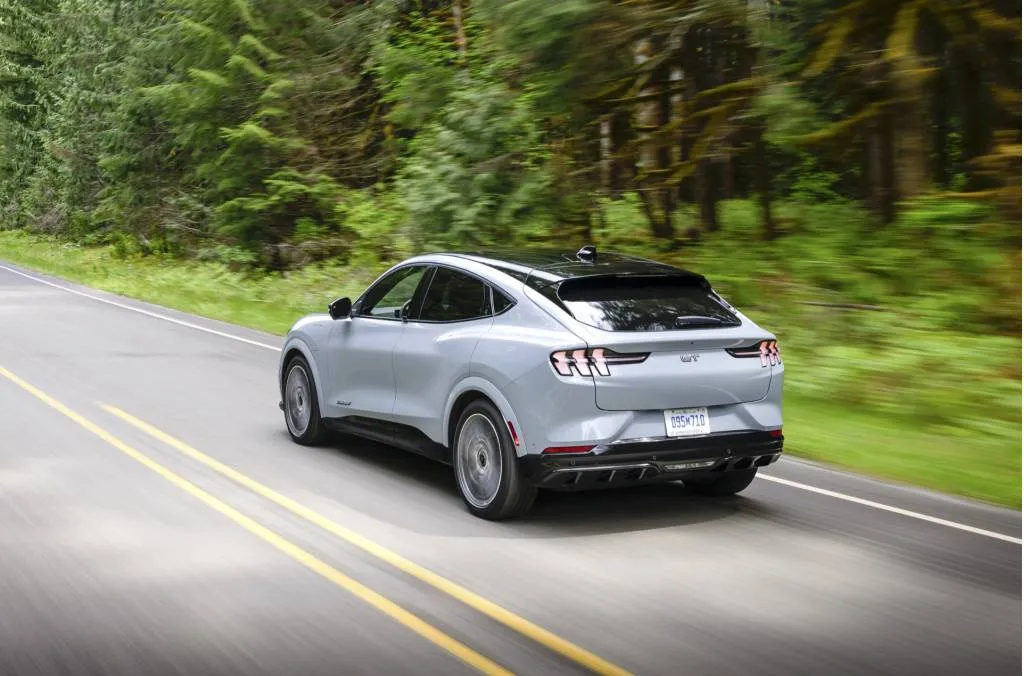
2024 Ford Mustang Mach-E GT
Ford Mustang Mach-E vs. Tesla Model 3 features and trims
-
Model 3 comes in base RWD, Long Range RWD or AWD, and Performance AWD models
-
Mach-E comes in Select, Premium, GT, and Rally models (GT and Rally are AWD-only)
-
Mustang Mach-E offers more choice
The Ford Mustang Mach-E offers way more choices than the Tesla Model 3. It comes in Select, Premium, GT, and Rally models. Select Mach-Es only have the smaller battery and a choice of rear- or all-wheel drive, while the GT and Rally only have the bigger battery and all-wheel drive. GT and Rally versions boost power output and offer a magnetic damping system for better ride and handling. In the middle, a Premium model lets buyers pick from either battery size, and rear- or all-wheel drive, to better serve their needs and budget.
Base equipment on the Mustang Mach-E includes AppleCarPlay and Android Auto, navigation, and wireless device charging, while Premium versions add heated front power seats, a heated steering wheel, Bang & Olufsen 10-speaker sound, and synthetic leather upholstery.
The Tesla Model 3 comes in four different models: a base model with rear-wheel drive and a smaller battery pack, Long Range models with either rear- or all-wheel drive and a larger pack, or a Performance version with all-wheel drive and the larger pack. The Performance had been on hiatus, but partway through 2024 it returned with a new adaptive suspension, a Track mode, and other upgrades.
All Model 3 versions include a fantastic list of standard features, by traditional car-buying sensibilities: a glass roof, a power trunklid, heated and cooled front seats, a heated steering wheel, heated rear seats, navigation, and a separate rear screen of the sort that has up until recently been solely the domain of high-end luxury cars. Some of those items are either saved for top versions of the Mach-E or unavailable.
Advantage: Model 3 for more standard features at a lower price point.
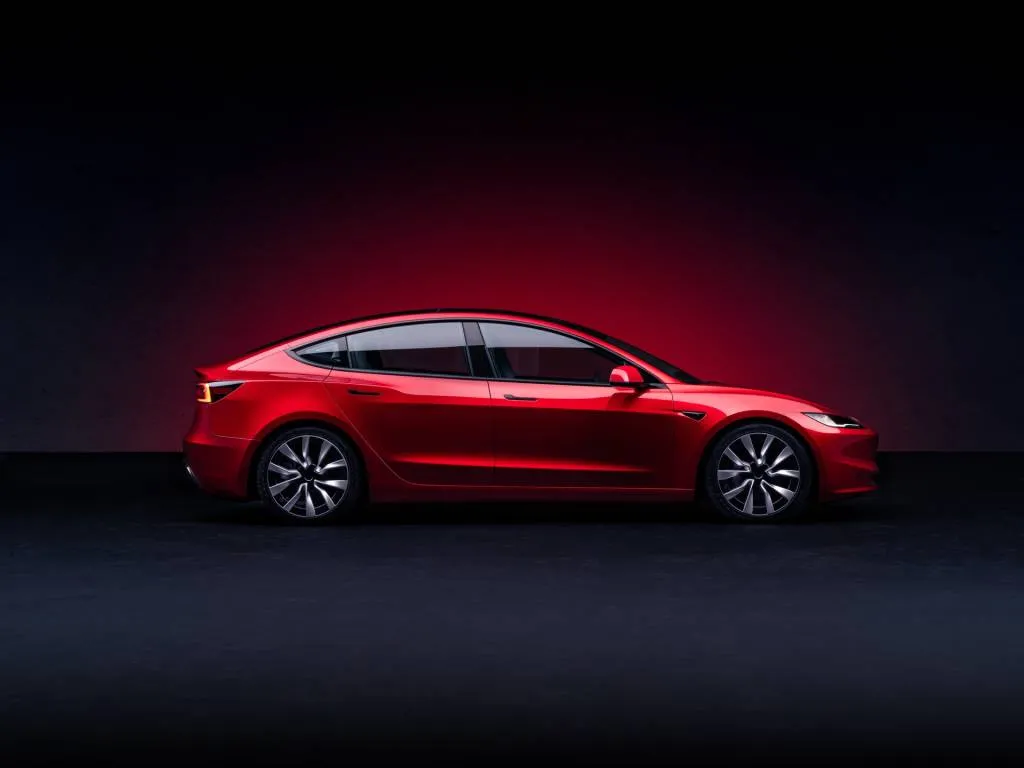
2024 Tesla Model 3

2024 Tesla Model 3
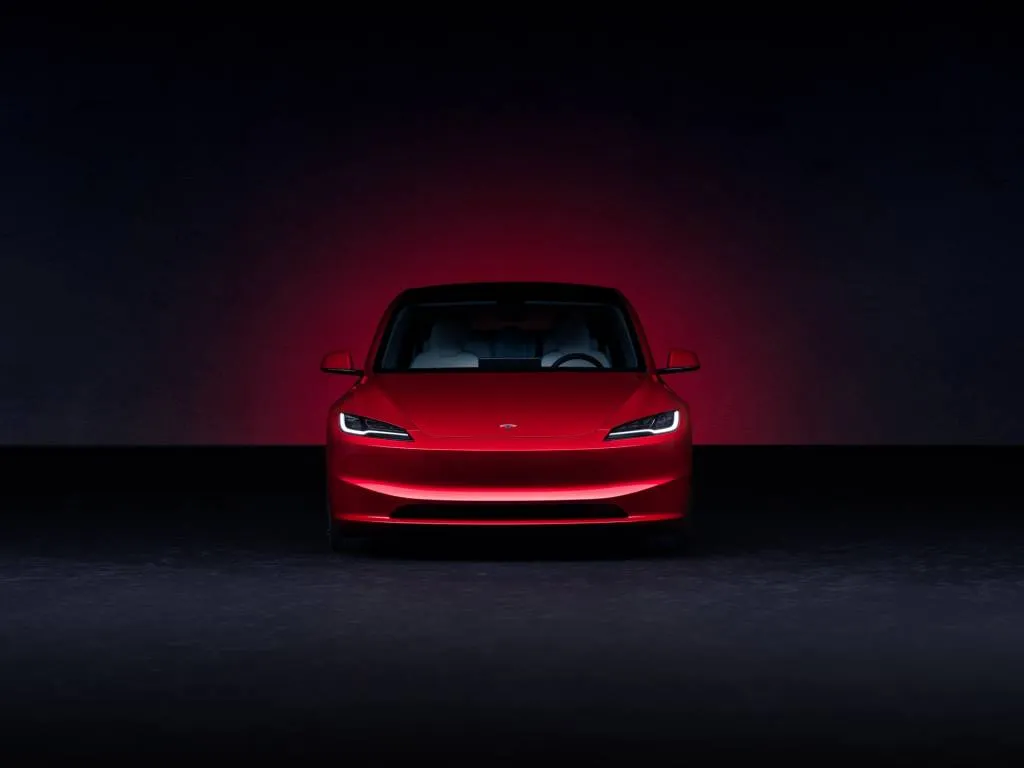
2024 Tesla Model 3
Ford Mustang Mach-E vs. Tesla Model 3 prices
-
The Tesla Model 3 costs thousands less
-
The Ford Mustang Mach-E doesn’t qualify for the EV tax credit
-
All Model 3 versions except for the base model qualify for a $7,500 tax credit
How much is a Tesla Model 3?
The base Tesla Model 3 currently costs $40,630, including destination; the Long Range AWD is about $44,000; and the Performance AWD is about $57,000. At present, all but the base Model 3 are eligible for the $7,500 EV tax credit—provided buyers meet qualifications for household income—so the Long Range models stand out as the stronger deals. But be aware that Tesla changes its prices frequently.
How much is a Ford Mustang Mach-E?
The base Mach-E Select with rear-wheel drive and the Standard Range battery costs $42,585, including destination. The Mach-E Premium starts at about $46,000, while the GT starts at about $56,000 and the Rally costs nearly $62,000. The Mexico-built Mach-E doesn’t qualify for the federal tax credit because its battery cells come from a plant in Poland.
Advantage: They’re both in the same range, but most of the Model 3 lineup is EV tax-credit eligible.
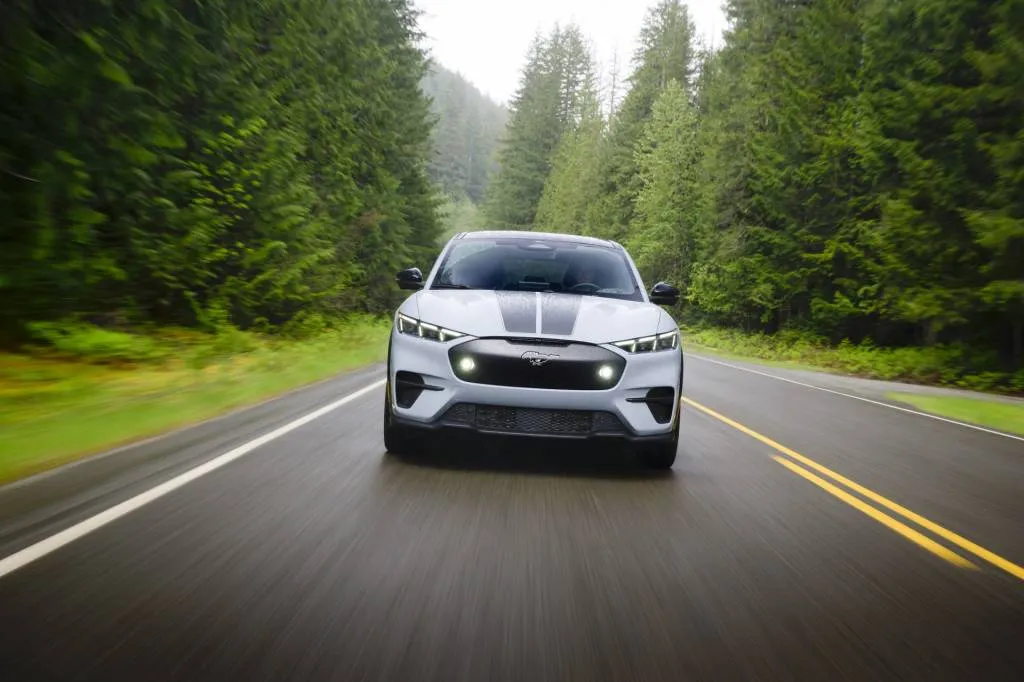
2024 Ford Mustang Mach-E Rally
Tesla Model 3 vs. Ford Mustang Mach-E range
-
Tesla Model 3 range: Base, 272 miles; Long Range, up to 363 miles
-
Ford Mustang Mach-E range: Standard Range, up to 250 miles; Extended Range, up to 320 miles
-
Tesla’s superior range still carries an edge
By official EPA range figures, the Tesla Model 3 has the range advantage here. It also does a lot more with less. The base Model 3’s battery has less than 60 kwh of usable capacity, and yet it goes 272 miles with it, while other versions with nearly 80 kwh usable will go up to 363 miles.
The Ford Mustang Mach-E, on the other hand, goes 250 miles with rear-wheel drive or 230 miles with all-wheel drive with its Standard Range pack’s 72 kwh of usable capacity. Mach-E Extended Range versions, with 91 kwh, go up to 320 miles (RWD) or 300 miles (AWD), while the performance-tuned GT goes 280 miles and the sporty, off-road-focused Rally goes 265 miles.
Advantage: Tesla Model 3 squeezes more miles from less, though real-world results are closer.
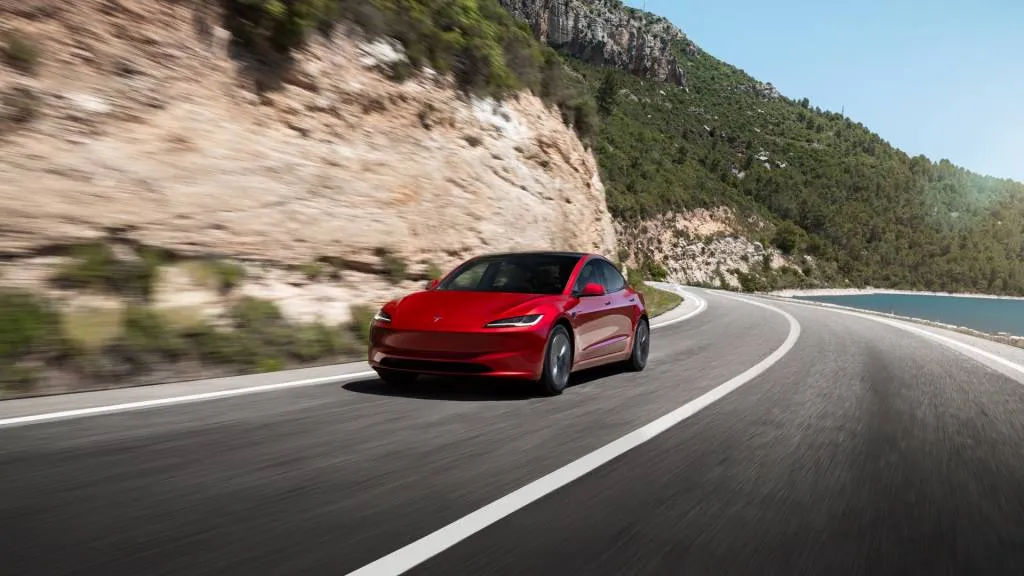
2024 Tesla Model 3
Tesla Model 3 vs. Ford Mustang Mach-E performance
-
The base Mach-E’s quicker than the base Model 3
-
In top versions, Tesla’s electric-car acceleration is, well, electric
-
The extended-range Model 3 is both quicker and faster than the Mach-E
The Model 3 and Mach-E are both offered in a range of outputs that span from perky rear-wheel-drive models to stronger-performing all-wheel-drive versions. In both cases, the performance models that top their lineups provide acceleration figures that were strictly supercar territory even a decade ago.
The Tesla Model 3 can accelerate from 0-60 mph in 5.8 seconds in its base form. Long Range Rear-Wheel Drive versions drop that to 4.9 seconds, while Long Range AWD models can do the 0-60 mph dash in 4.2 seconds, according to Tesla. The lineup tops out with the Model 3 Performance, claiming 2.9-second 0-60 mph runs and a top speed of 163 mph—plus an adaptive damping system, forged wheels, performance brakes, a carbon-fiber spoiler, and other aerodynamic improvements.
As for the Mustang Mach-E, the 0-60 mph run takes 6.3 seconds for the base single-motor version with the LFP battery pack, ranging down to as little as 4.1 seconds with the dual-motor AWD layout and larger battery pack. Top-spec Rally versions boast a 0-60 mph time of just 3.4 seconds.

2024 Ford Mustang Mach-E Rally
In actual output numbers, the Mach-E starts with a single-motor rear-wheel-drive model making 264 hp and 317 lb-ft of torque (bumped to 290 hp with the larger pack). Dual-motor non-GT/Rally Mach-E versions make 325 hp and 427 lb-ft with the smaller pack or 365 hp and 428 lb-ft with the larger one. GT and Rally versions both make 480 hp, while the Rally and GT versions with the Performance upgrade boost the 600 lb-ft up to 700 lb-ft. The Model 3 starts with a more modest-sounding 257 hp, with Long Range AWD versions at 394 hp and top Model 3 Performance models at 510 hp combined.
One other key difference between these two models is the way that they break out the feel of acceleration and deceleration. The Mach-E gives drivers lots of choice in how much energy the electric motors recoup when you lift off the accelerator, depending on Whisper, Engage, and Unbridle modes, and you can turn the regen up to a one-pedal driving mode or nearly off entirely. The Tesla, on the other hand, now makes you accept its quite aggressive regen; it’ll take some getting used to.
Weight and aerodynamics play a role ultimately in the impression that the Model 3 is peppier and quicker in most types of passing and acceleration. The base Tesla Model 3 weighs less than 4,000 pounds in its base version and only about 4,100 pounds in its top Performance edition, while the Mach-E starts around 4,600 pounds and ranges just past 5,000 pounds for top GT and Rally versions.
Advantage: Tesla Model 3 is a little quicker.
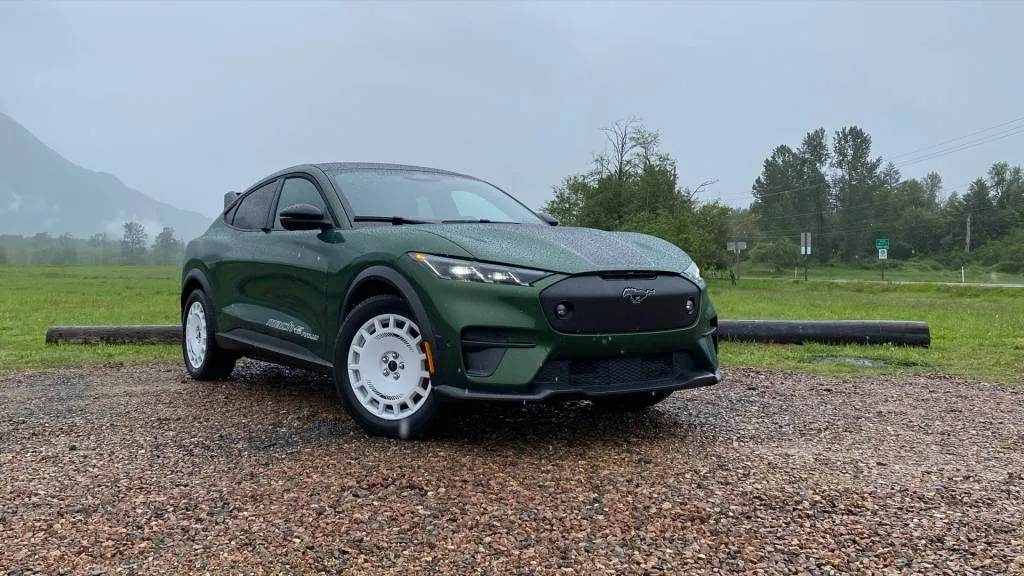
2024 Ford Mustang Mach-E Rally
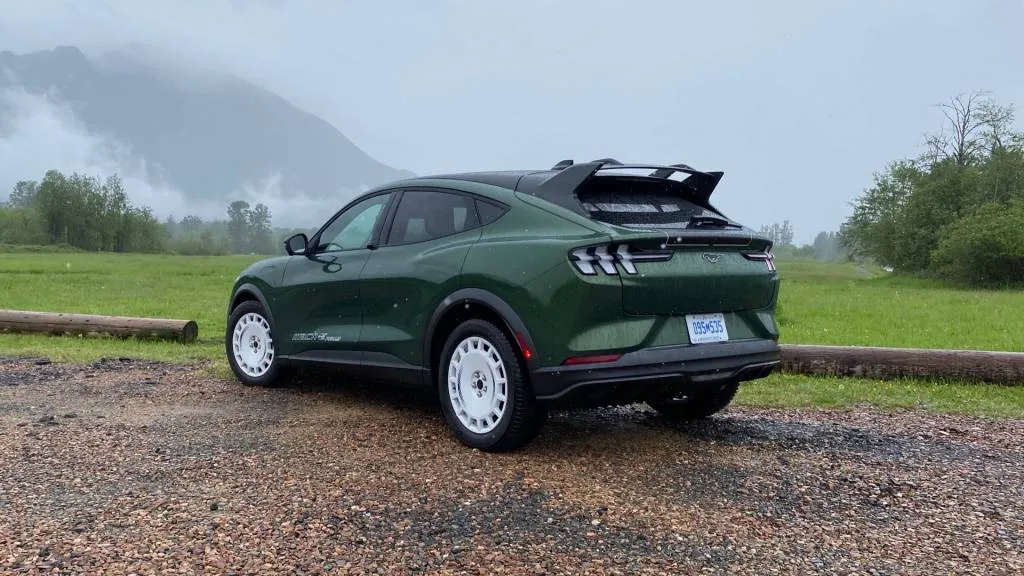
2024 Ford Mustang Mach-E Rally
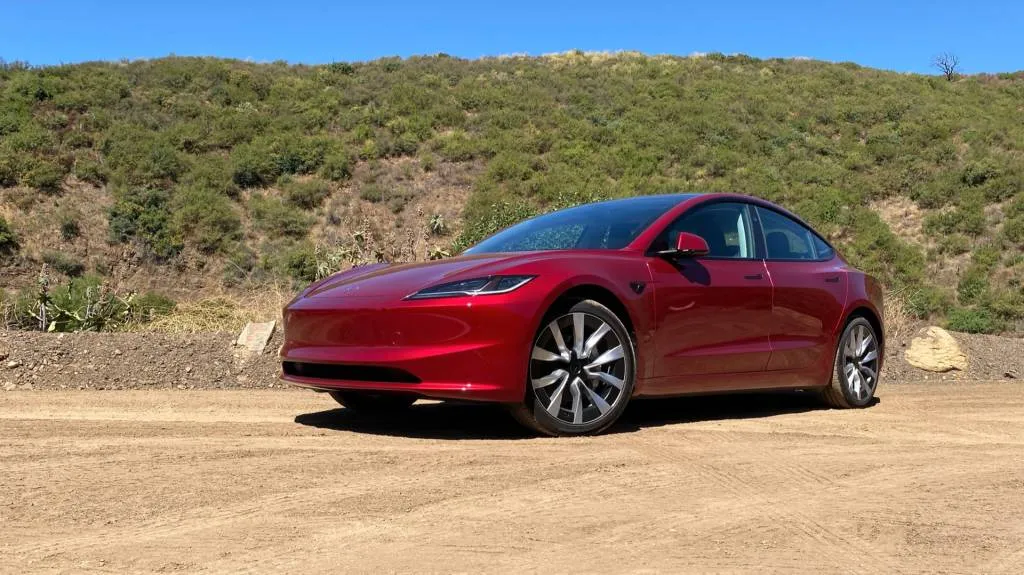
2024 Tesla Model 3
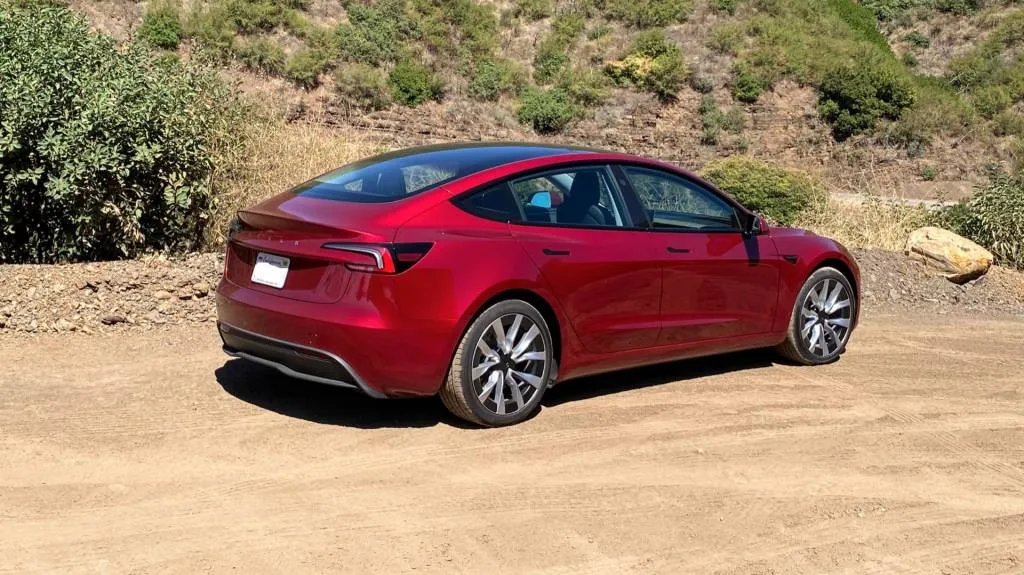
2024 Tesla Model 3
Ford Mustang Mach-E vs. Tesla Model 3 ride and handling
-
Go with the Mach-E if you tackle snow or unpaved roads
-
Ride quality now a tie after big Model 3 improvements for 2024
-
Tesla takes the cake on curvy roads, but Mach-E Rally is a hoot
Weight is a differentiator in the way these two models ride and handle. For the most part, they have settled, refined rides and yet handle quite athletically, as their heavy battery packs are mounted low, giving them correspondingly low centers of gravity. Even the most affordable Model 3 hugs the ground, with a suspension tuned like a base BMW 3-Series sport sedan, and its choice of three steering settings are about all you need to worry about dynamically. There’s a satisfying precision in the Model 3’s handling, from its nicely centering, quick-ratio steering to the way the body responds predictably but not harshly in tight corners.
Visual command of the road is one big reason why car shoppers choose crossovers like the Mustang Mach-E—and the similar Tesla Model Y—but the Model 3 tucks in and out of corners like a proper sport sedan. The Mach-E rides higher, and so it feels somewhat more like a crossover in the way it rides and handles. Its three driving modes bring different tuning for the steering plus a soundtrack to go with it, and for the most part we’ve found Whisper perhaps the most satisfying.
Road and wind noise are more noticeable in EVs, but both of these models are standouts, with relatively quiet cabins and good highway rides especially. This wasn’t always the case for the Model 3, but its comprehensive refresh for 2024, nicknamed Highland, delivered all kinds of improvement to sealing and noise insulation, as well as updating bushings and frequency-selective dampers that tune out ride harshness.
In the Mach-E lineup, the star for ride and handling isn’t the performance-oriented GT but the new Rally edition. It adds magnetic dampers as standard, as well as a special RallySport drive mode that allows drivers to play fast and loose on mud, gravel, or snow and ice, showing off how much dynamic fun can be paired with the instant torque of electric propulsion.
Advantage: The Tesla Model 3 offers great daily-driving enjoyment, while the Mach-E Rally is a hoot.
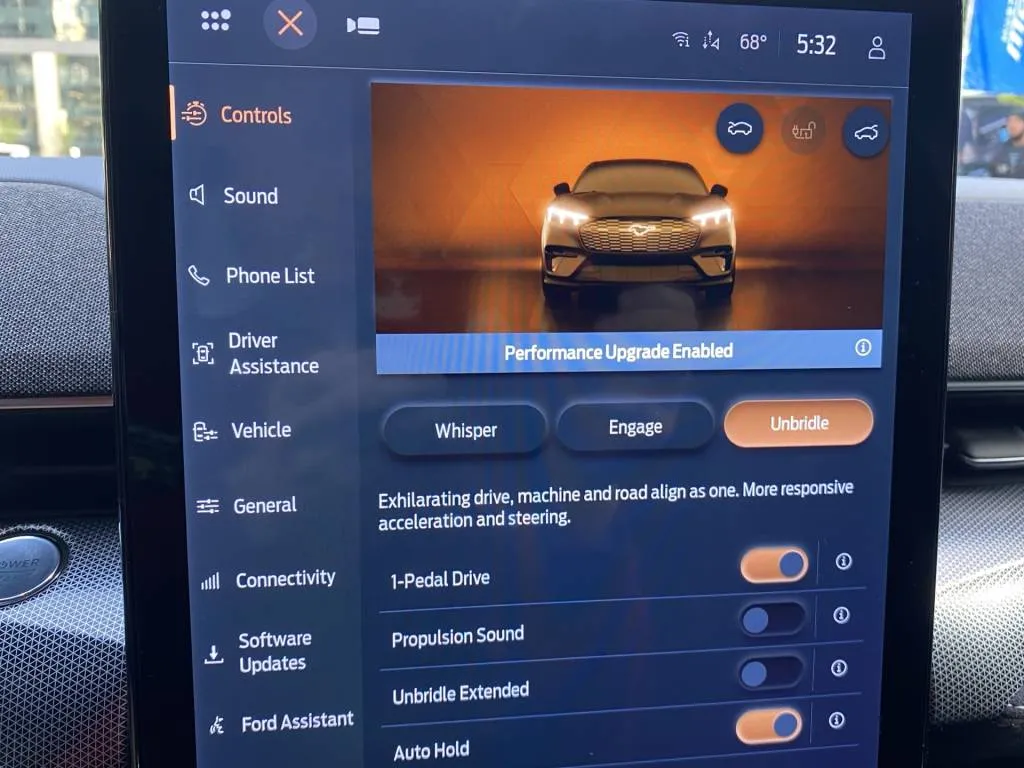
2024 Ford Mustang Mach-E GT
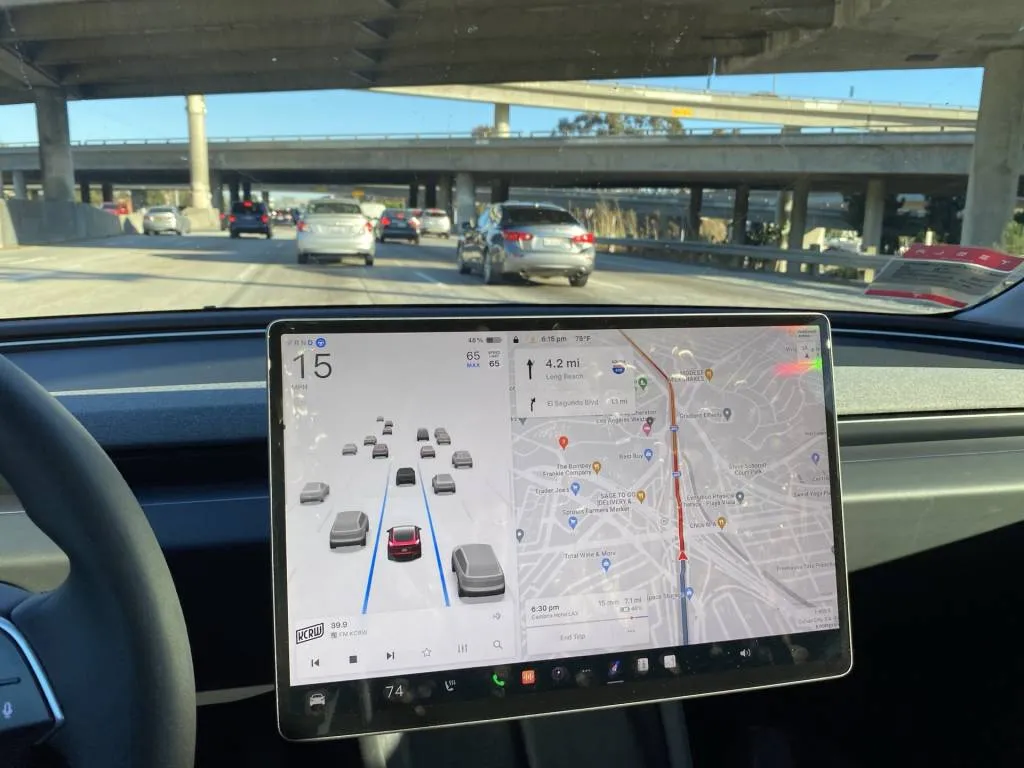
2024 Tesla Model 3
Ford Mustang Mach-E vs. Tesla Model 3 technology
-
Big touchscreens rule both interiors
-
Tesla skips Apple CarPlay and Android Auto
-
Tesla puts more emphasis on screen functionality
There is no question Ford wanted to emulate Tesla with its vertically oriented 15.5-inch touchscreen infotainment system, but Tesla has again reinvented the car cockpit with its 15.4-inch landscape-oriented touchscreen. Previous versions of the Model 3 replaced the instrument cluster, climate controls, multimedia controller, vehicle info screen—everything, really, aside from two steering wheel toggles. Now, with the 2024 refresh, even the turn signal stalk and shift lever are gone, replaced with touchscreen shifting and steering-wheel turn-signal buttons that are annoying to say the least.
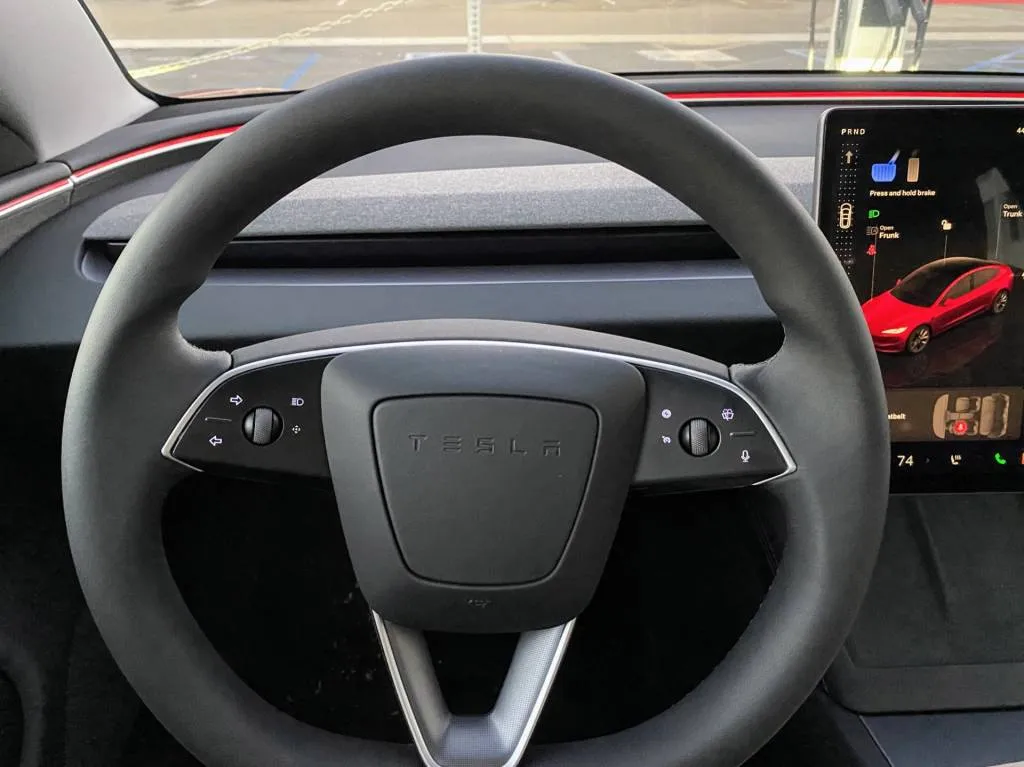
2024 Tesla Model 3
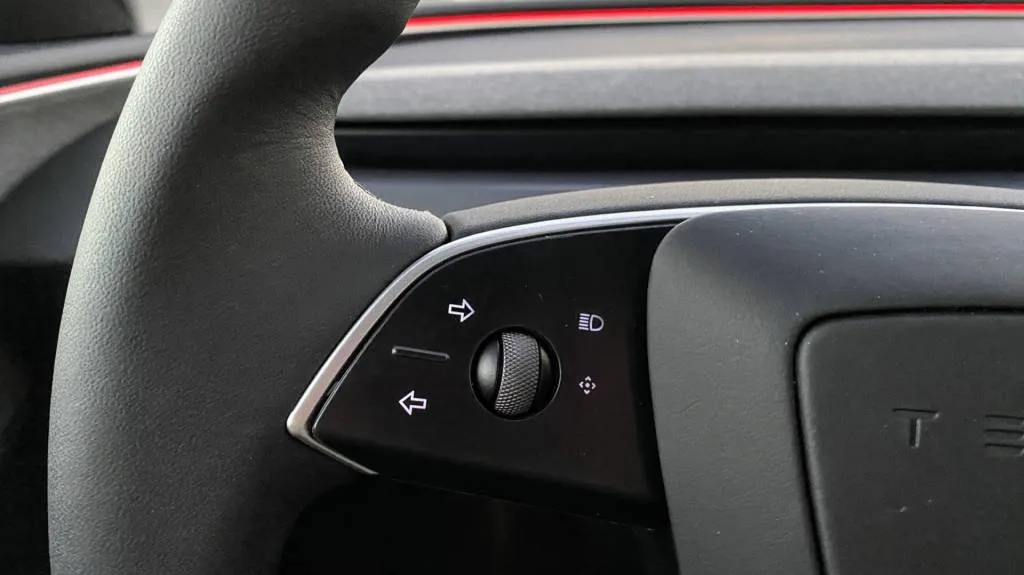
2024 Tesla Model 3
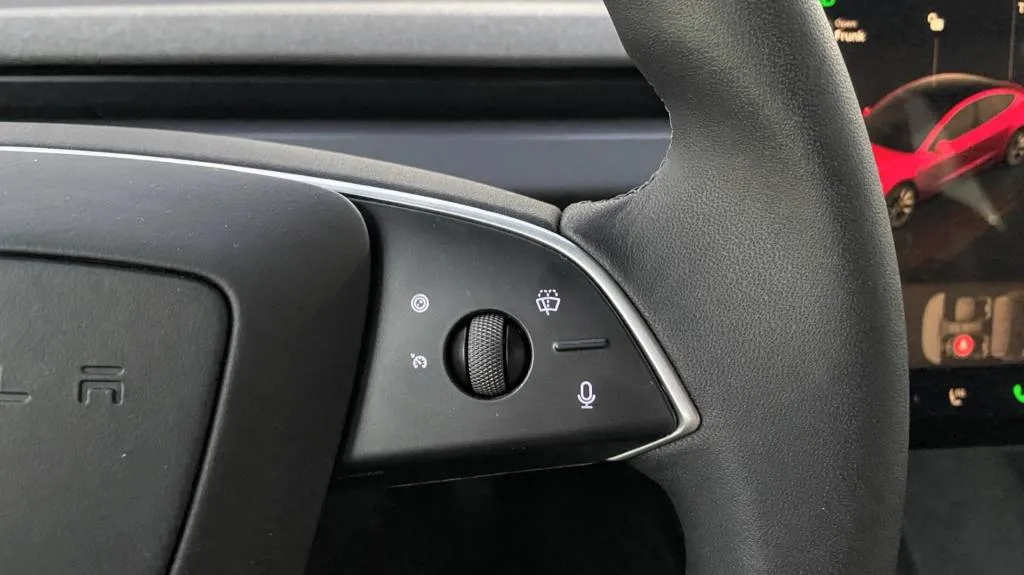
2024 Tesla Model 3
While those latest interface decisions may be deal breakers to some buyers for the Tesla, the responsiveness of its system to touch controls, voice commands, and more is intuitive and latency-free; like an iPad, anyone will be using it with ease in the first five minutes. Climate controls rest in a bar at the bottom of the screen, and there’s no gauge cluster; that’s the top left area of the screen. Tesla’s crystal-clear navigation and mapping is one of the best built-in systems, but there’s no Apple CarPlay or Android Auto compatibility, and no AM radio. It’s all apps such as Tunein or Spotify. Update those playlists or suffer app fatigue.
Ford’s vertical screen doesn’t look as well integrated as Tesla’s, but it has a permanent climate bar in the lower quadrant that’s clear and easy to use even with gloves. A volume dial in that section is a nod to the frustrations aired by owners of other vehicles who loathe touch-sensitive volume controls, but it feels chintzy.
Ford doesn’t throw you into the deep end of the pool all at once; the Mach-E gets a 10.2-inch reconfigurable instrument screen with a small gauge cluster for speed and status of driver-assistance systems.
Both of these models offer phone-as-key functionality, plus app-based connectivity through which you can check vehicle status, precondition the interior, optimize charge time, and control other features through your smartphone. The Tesla does it all flawlessly and without latency, with one of the best apps in the business that ties in seamlessly with the in-car interface.
Advantage: Tesla Model 3 for better integrated technology.
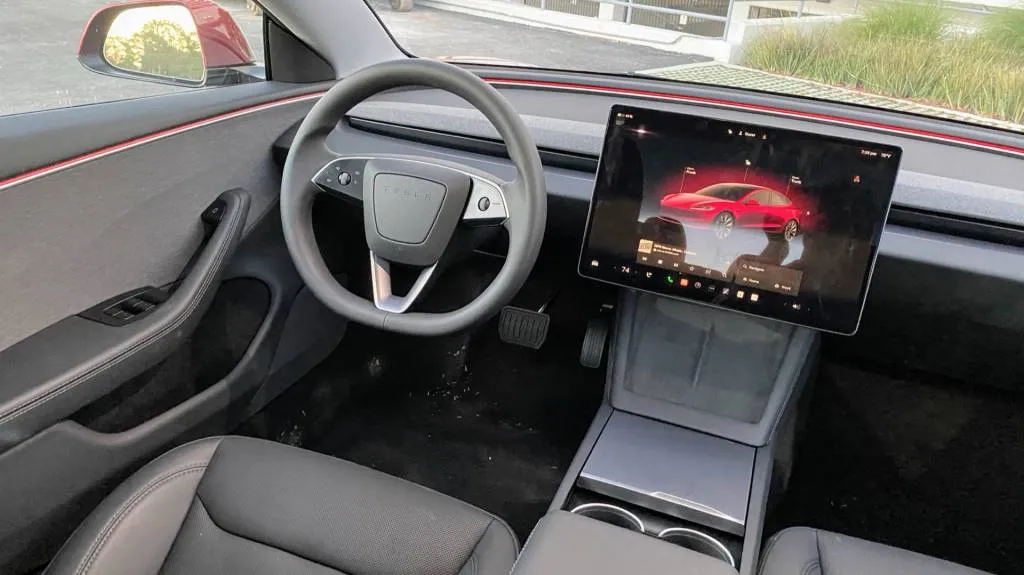
2024 Tesla Model 3
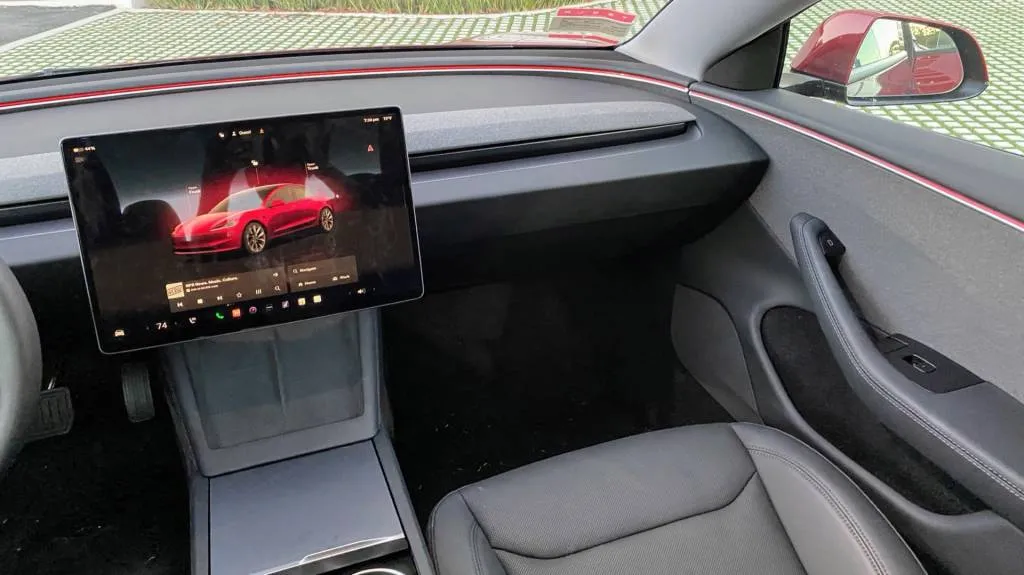
2024 Tesla Model 3
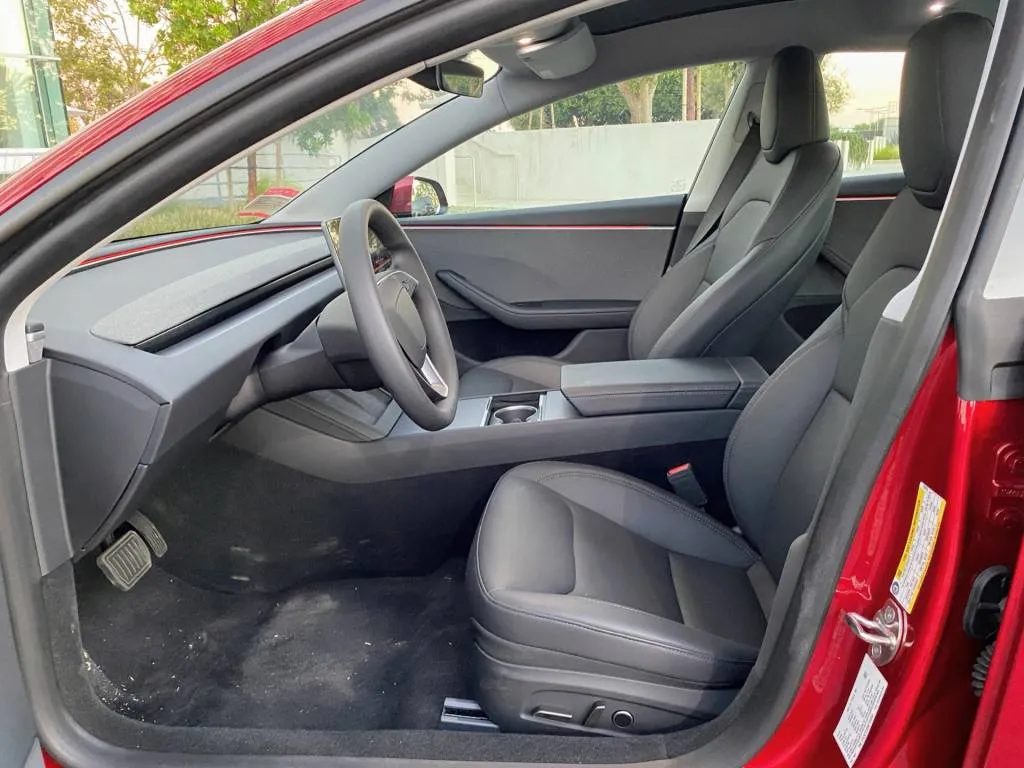
2024 Tesla Model 3

2024 Tesla Model 3
Tesla Model 3 vs. Ford Mustang Mach-E interior and cargo
-
The Model 3’s cockpit remains spartan, but fit and finish has improved
-
The Mach-E’s cargo space is impressive, and both have frunks
-
Model 3 has a roomier back seat than you might expect
While both five-passenger EVs, the Tesla Model 3 and Ford Mustang Mach-E are different vehicle body styles, and their interiors couldn’t be more different.
The Tesla Model 3 interior is minimalist to an extreme, with no turn-signal stalk or shift lever and even the vents are hidden beneath a panel that spans the dash. It may be appealing for that reason for those who want to be completely free of clutter, but most will likely be overwhelmed at first by the prospect of shifting so many controls to the touchscreen and steering-wheel toggles. The Mach-E has better fit and finish, far superior cabin materials, and more reassuring switchgear, although this past year’s refresh to the Model 3 upped its fit and finish.
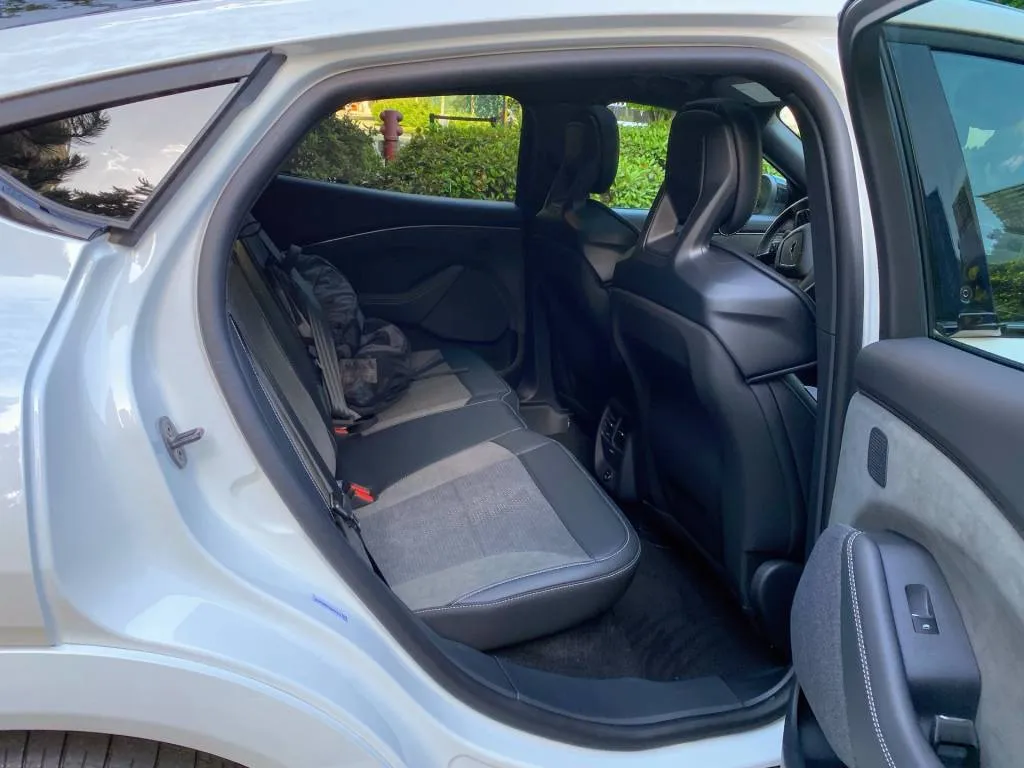
2024 Ford Mustang Mach-E GT
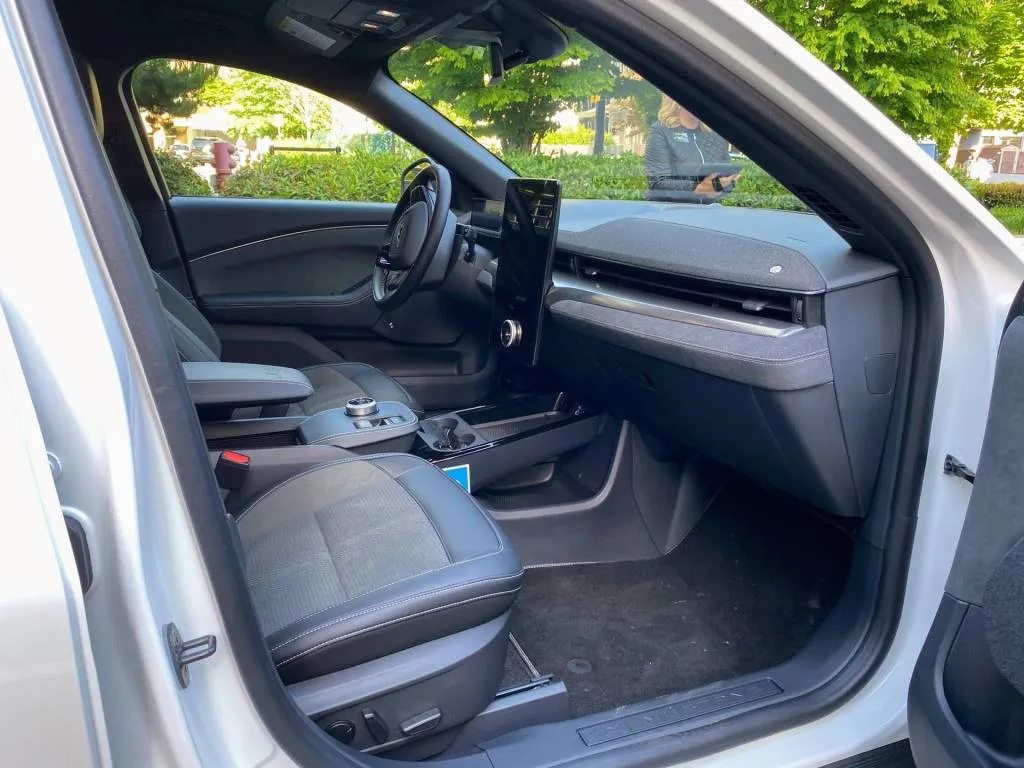
2024 Ford Mustang Mach-E GT
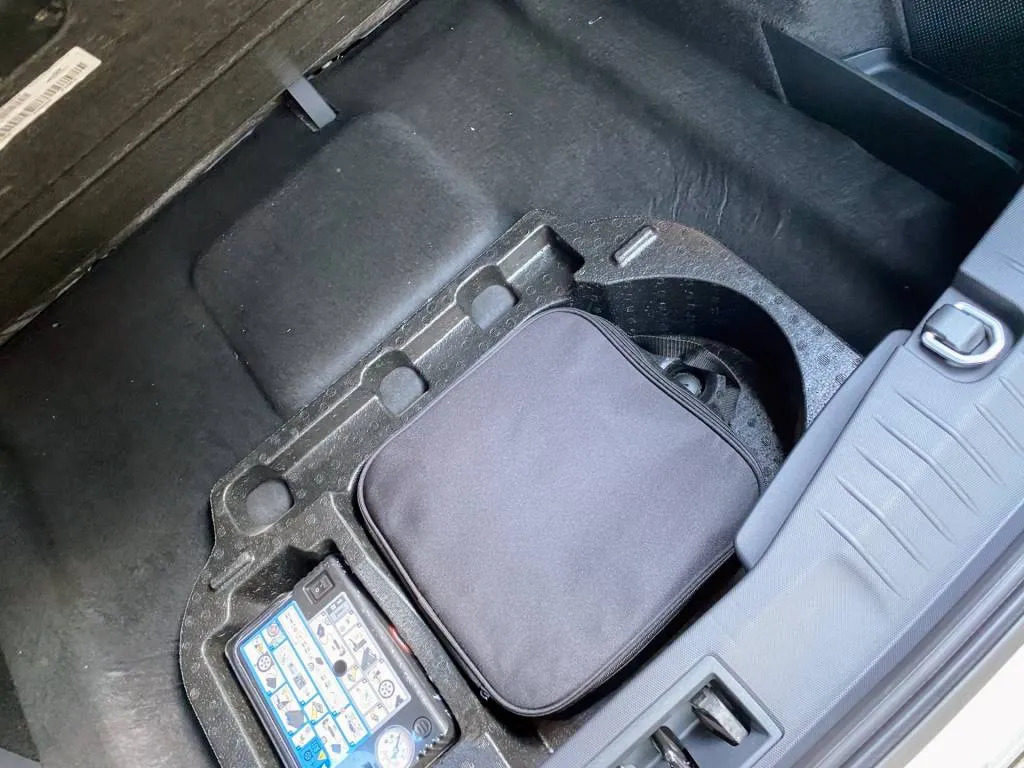
2024 Ford Mustang Mach-E GT
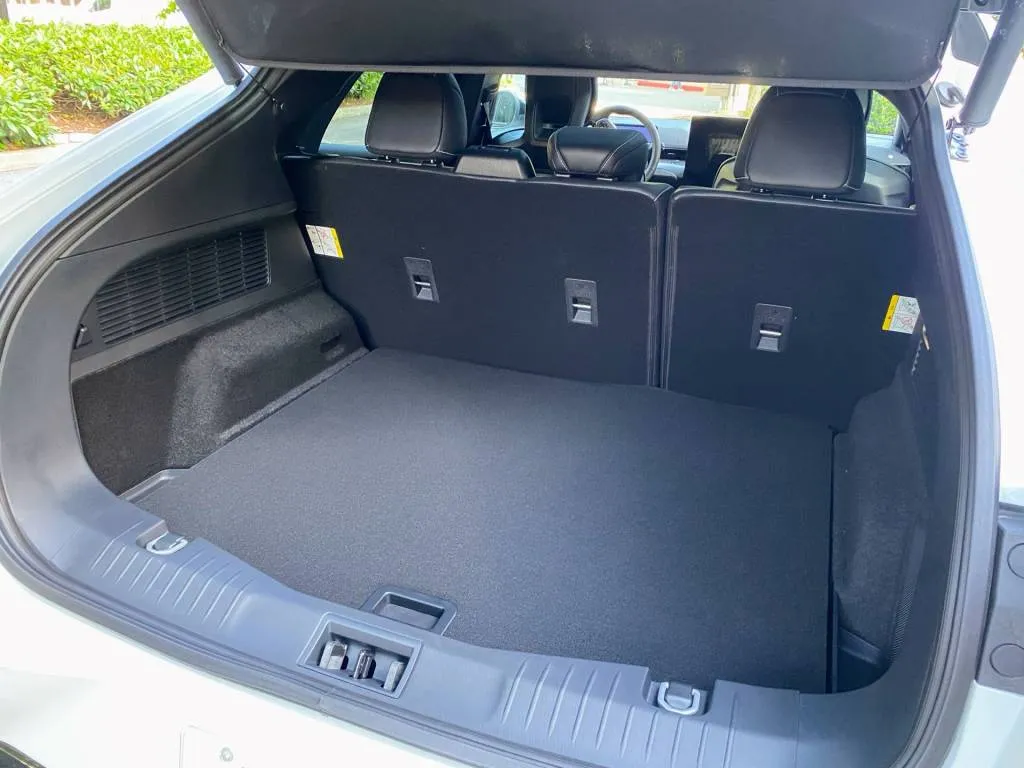
2024 Ford Mustang Mach-E GT
For the most part, the Mustang Mach-E sticks with a more conventional layout, although the 15.5-inch touchscreen is at the core. The only piece of switchgear that doesn’t feel up to this model’s otherwise premium standards is the rotary gear selector on thecenter console. The Model 3’s center console area has been redesigned with wireless charging and space for two smartphones, and its center console is deep, with abundant storage.
Seat comfort favors Tesla. Ford’s seat bottoms are short in the Mach-E, so the long-legged don’t get as much thigh support, but it does have more pronounced side bolsters. The Model 3 has good front seats, though they need better back support for longer trips. Mach-E headroom is better; but don’t write off the Model 3 interior for passengers as it has plenty of space for two adults, with headroom the limiting factor.
With the rear seats up, trunk space appears to be close between the two vehicles. But the Mach-E’s tall hatchback body style gives it 29.7 cubic feet compared to 21.0 cubic feet in the Model 3. Both have deep front trunks (frunks) that are good for more than a purse or charging cable; each can hold a few grocery bags.
Advantage: Ford Mustang Mach-E for more cargo space.
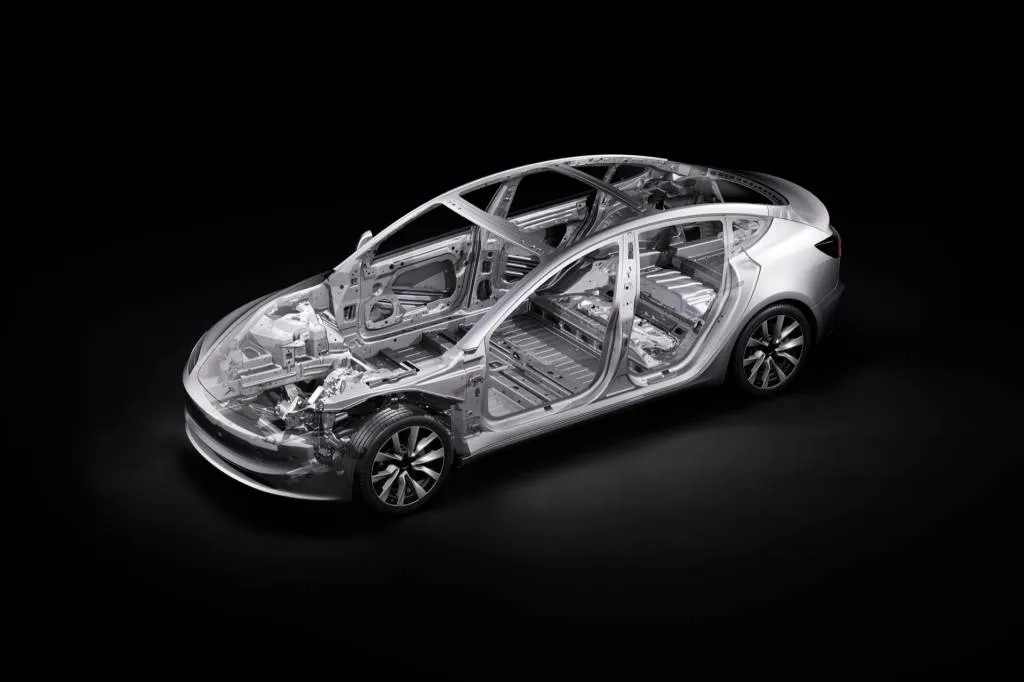
2024 Tesla Model 3
Ford Mustang Mach-E vs. Tesla Model 3 safety
-
“Full Self-Driving” still hasn’t arrived
-
BlueCruise permits some hands-free driving
-
Strong crash-test scores for both
The Mach-E and Model 3 compare well for crash safety, but Ford doesn’t continue to mislead customers about its cars’ technological and regulatory limits in navigating the world of “self-driving” cars.
The Model 3 has in previous years earned a spot on the Top Safety Pick+ list from the IIHS and a five-star NHTSA rating. It has automatic emergency braking, active lane control, adaptive cruise control, and blind-spot monitors. All Model 3s get a full sensor suite with eight cameras and camera views that are very useful for parking.
The Model 3’s “Full-Self Driving” package is not what it is billed as. It currently costs $8,000 up front or can be had in monthly subscription options, promising “minival driver intervention” for navigation, even in the city. But it’s a convenience feature not a safety one and requires constant driver attention.
The Mach-E has earned IIHS Top Safety Pick status in previous years, with generally top-tier occupant safety results, but the NHTSA hasn’t tested it yet. Each Mach-E has automatic emergency braking with pedestrian detection, active lane control, automatic rear braking, blind-spot monitors, and automatic high beams.
BlueCruise is Ford’s driver-assistance system, allowing the driver to go hands-free on more than 130,000 miles of mapped divided highways—as long as the driver is attentive. BlueCruise will suggest lane changes but not initiate them without a tap of the turn signal lever.
Advantage: Draw.
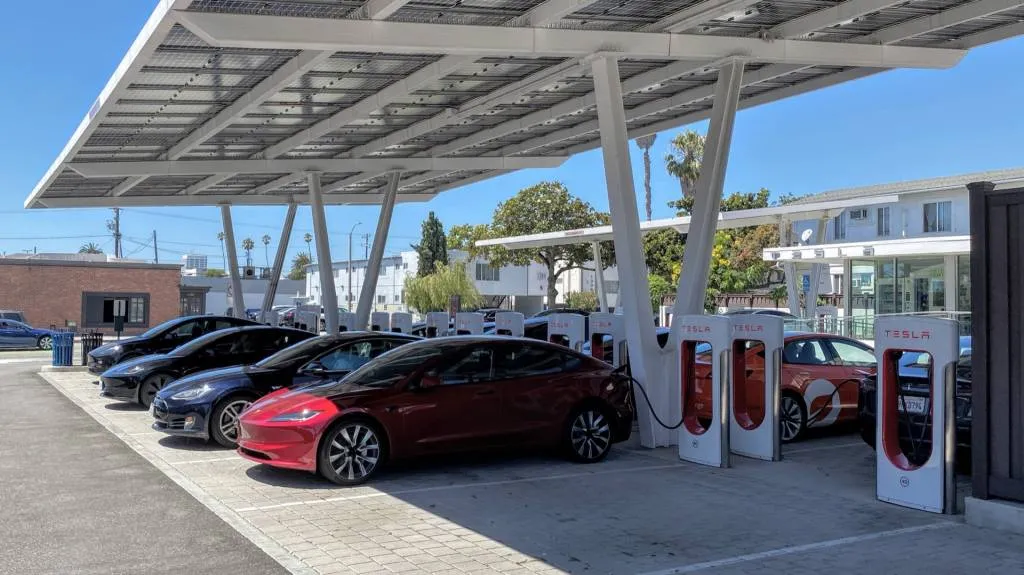
2024 Tesla Model 3at Santa Monica Supercharger station
Tesla Model 3 vs. Ford Mustang Mach-E charging
-
Tesla has nearly 2,300 Supercharger stations in the U.S.
-
Mach-E can access Supercharger stations with Ford-supplied adapter, among thousands of other stations
-
Model 3 is the road-trip choice for faster charging, better trip planner
The Tesla Model 3 benefits from more than a decade of investment in the company’s Supercharger network, its optimization of charge rates for road-trip fast-charging, and far superior efficiency in terms of miles per kwh. It all adds up to far less time spent at the charger for the Tesla—and less time looking for one.
With simple plug-and-charge operation and the ability to easily find stations and see plug availability via the car’s navigation system, Tesla is still the gold standard for EV charging. The unified ecosystem has advantages that show at the charger, in the car, or in the smartphone app. On a Tesla V3 charger, the Model 3 can gain about 175 miles of range in just 30 minutes, or go from 10-80% in about 30 minutes—or less for the base version.
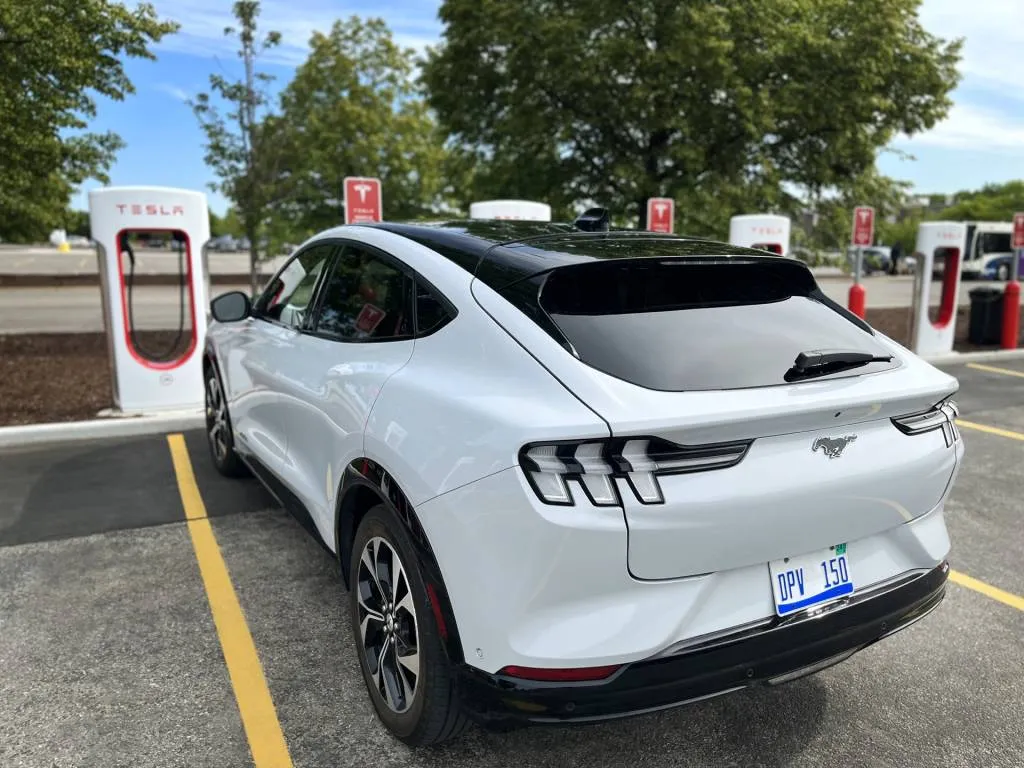
Ford Mustang Mach-E at Tesla Supercharger
Can you charge a Ford Mustang Mach-E on a Tesla charger?
With a Ford-provided app, you can use the Tesla app and Tesla Supercharger network for road-trip charging. But via the Mach-E’s route-finding interface you can see thousands of charge points from different networks within Ford’s aggregated FordPass Charging Network.
The Mach-E can be charged from 10-80% in as little as 36 minutes, Ford says, although we haven’t seen consistently quick results in real-world charging. On a 240-volt outlet, it takes less than 10 hours with the top Ford Connected charging station on a 60-amp circuit.
Versions of the Mach-E and Model 3 with their smaller battery packs have some technology in common. They both use lithium-iron-phosphate battery chemistry, which allows daily charging up to 100%, with fewer concerns about “topping up.” Both Tesla and Ford advise saving a full charge in other models road trips when the full range is needed.
Advantage: Tesla still shows how it’s done.
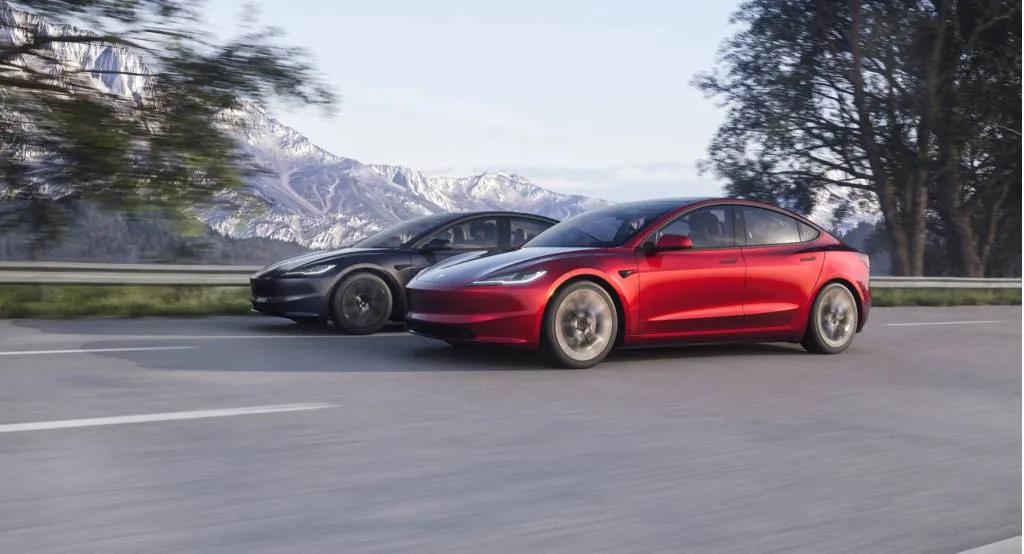
2024 Tesla Model 3
Ford Mustang Mach-E vs. Tesla Model 3: Which is better?
The Tesla Model 3 and Ford Mustang Mach-E are different kinds of EVs, with vastly different priorities. While the Mach-E is more complete and satisfying as a traditional vehicle, in its interface, accommodations, and all-weather versatility, the Ford can’t keep up with the Model 3’s road-trip charging and battery efficiency.
Tesla has gained in fit and finish and build quality, as well as ride quality and cabin comfort, with this year’s refresh to the Model 3. It means that for now, the Ford Mustang Mach-E trails, very slightly, in its TCC Rating of 8.2, compared to a 8.3 Tesla Model 3.
Given Tesla hasn’t yet given its Model Y the same level of improvement as the Model 3, that means the Mustang Mach-E has the continued edge in the more likely comparison shoppers are going to make—Model Y vs. Mach-E.
